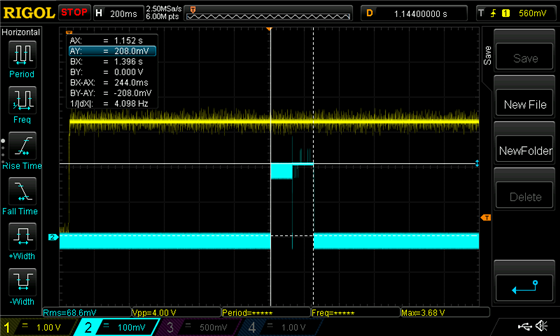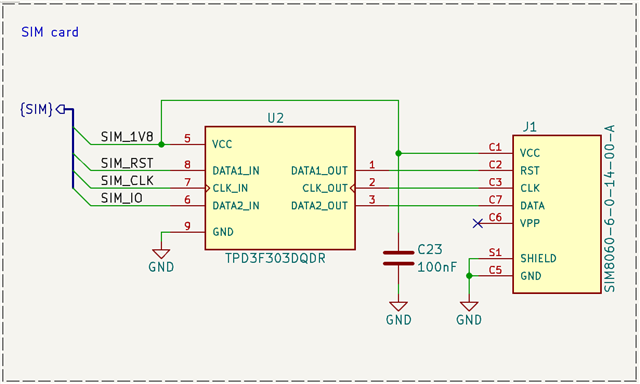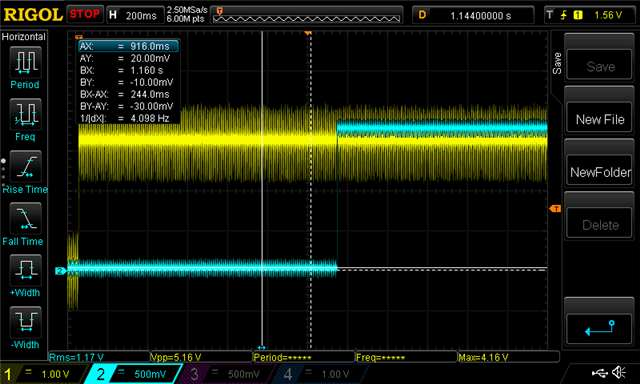I ordered my second prototype board with the nRF9160, which includes small changes compared to the previous version. I encountered an issue with LTE connectivity. After some checks and hardware verification, I noticed that the SIM card is not being supplied with power. During system startup and while attempting to connect to the network, a few microvolts appear briefly on the SIM_1V8 pin for a few milliseconds. It seems like the microcontroller is trying to power the SIM card.
After further investigation, I found that the nRF9160 chip has a short circuit between the SIM_1V8 pin and GND. I desoldered the microcontroller and confirmed that the short circuit is within the nRF9160 chip itself; the PCB is unaffected. In comparison, the short circuit does not occur in the previous prototype version, which worked well and connected to the network without issue.
I received two assembled prototypes, and both exhibit the same problem. However, the previous prototypes worked correctly, and the chip was able to connect to the network properly.
I’m wondering if there’s an option in the microcontroller that needs to be enabled to supply 1.8V to the SIM card?
The difference between the chips used in the prototypes is as follows:
- Current prototypes: nRF9160 SICA B1 2230JF (with short circuit)
- Previous prototypes: nRF9160 SICA B1 2231JU (working properly)
I am using:
- SDK v2.5.1
- nRF Toolchains v2.5.1
- Modem MFW v1.3.6






